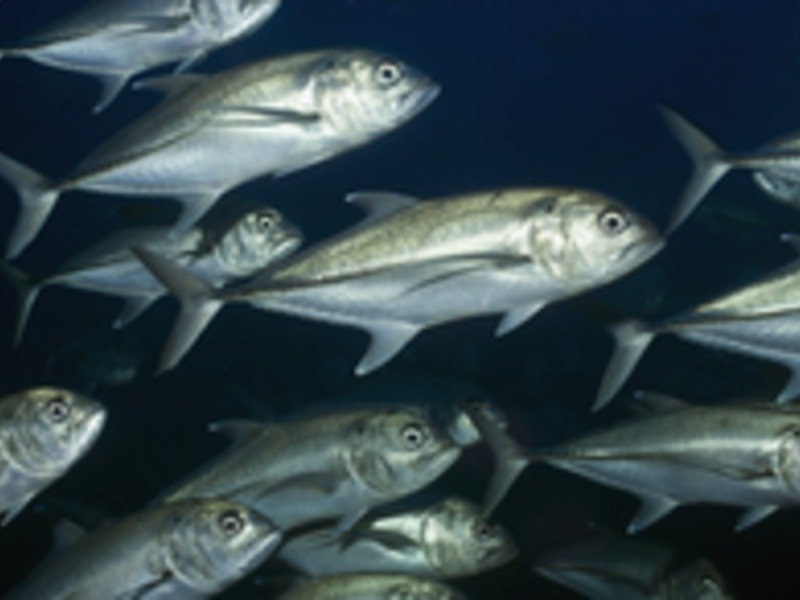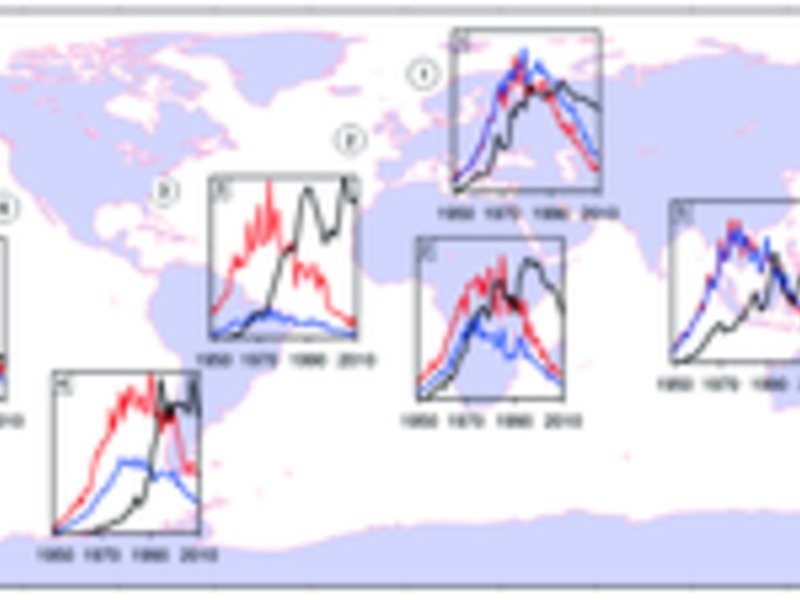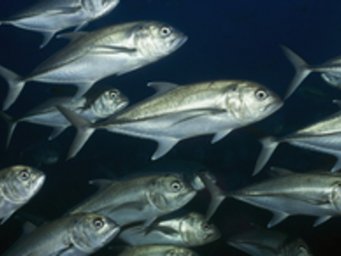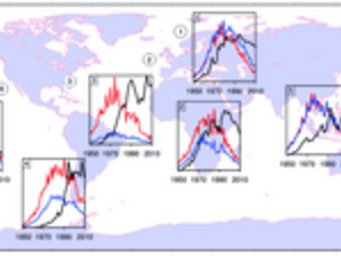Old toxic substances return from the deep sea
Model study shows: Pesticides and industrial chemicals which were released decades ago continue to reach the food chain – currents transport poisonous substances to new marine regions
Technically, hazardous substances such as DDT and PCBs were banned as early as the 1970s due to their harmful health effects. Since then the concentration of these chemicals, which were once used as insecticides, in electric capacitors and as plasticisers, is decreasing in the atmosphere and in soils. Two years ago, however, reports appeared stating that concentrations of these substances are on the rise again in the Arctic, due to melting sea ice and the warming of the ocean. A model simulation based on data from 1950 to 2010 by Prof. Dr. Gerhard Lammel and Dr. Irene Stemmler revealed new insights: The toxic substances stored in the depths of the oceans are transported by currents to areas in the western and eastern North Atlantic, where they once again increase toxic load. The same has been happening in many marine areas. Through deep sea fishing, the toxins may ultimately return to the human food chain.

Previous studies neglected oceanic transports both in the estimates of the amount of hazardous waste from the past, and as a possible source for their return. On the basis of the emissions since 1950, Prof. Dr. Gerhard Lammel from the Max Planck Institute for Chemistry and Dr. Irene Stemmler from the Institute for Hydrobiology and Fisheries Science of the University of Hamburg were able to calculate the distribution of the toxic substances in mid and deep waters of the world ocean. For this purpose, they are using an earth system model, which takes into account the circulation of substances in the ocean, atmosphere, soils, vegetation and ice (so-called multicompartment model). The researchers focussed on polychlorinated biphenyls (PCB28 and PCB153) and dichlorodiphenyltrichloroethane (DDT) – substances which have been released into the environment in large quantities predominantly in the 1960s and 1970s. These substances are part of the so-called “dirty dozen” chemicals, which have been largely prohibited since 2004 by the Stockholm Convention (also called “POP Convention” for “Persistent Organic Pollutants”). Due to their low water solubility but high fat solubility the toxins accumulate in fat tissue of wildlife and humans, which damages health and the reproductive systems.
“In simple terms, we can say that there are waves of pollution in the deep sea which appear with a time delay compared to the peaks in concentrations on land and in the air”, Prof. Dr. Lammel explains his results. The results show that to date the rate of toxic load in some marine areas has reached a maximum twice. The concentration of the toxic substance PCB153 in midwater depths off the western Irish coast reached a peak level for the first time around the year 1985, followed by a second peak around 2000. These maxima could not have been caused by humans, as bans were effective, reflected in decreasing concentrations of the substance on land and in the air. The first peak was caused by particles taking up the substances in surface seawater and subsequently sinking to the depths. The second peak was caused by ocean currents transporting chemicals from other marine regions to the area. “We expect that other waves of pollution will appear with time delays in the Northern Atlantic and in other marine areas. This will continue to happen until the extremely slow degradation of the toxins starts to become effective or until the substances are embedded in the deep sea sediments”, the Max-Planck scientist predicts.

No all-clear for DDT and Co.
The studies of Lammel and Stemmler show that even the long-banned toxins of the “dirty dozen” cannot yet be given the all-clear, as fish from polluted marine areas end up in the human food system through deep sea fishing. “For a long time the opinion prevailed that everything that sunk to the bottom of the ocean is no longer a concern to humans. Our study shows that this has not been thought through”, Irene Stemmler and Gerhard Lammel point out.
The results of the study have been published in the scientific journal “Geophysical Research Letters”, Vol. 40.
The study has been conducted as part of the EU-project “ArcRisk”, which is concerned with health risks by environmental chemicals under climate change in the Arctic and in Europe.

